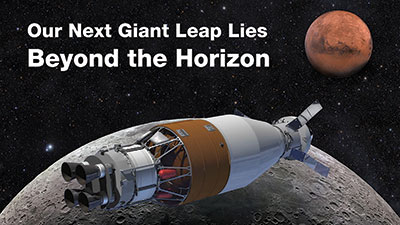Behind the scenes: Meet the 1st astronauts to fly Starliner
Get to know the astronauts inside and outside of work ahead of Starliner’s crewed flight test.
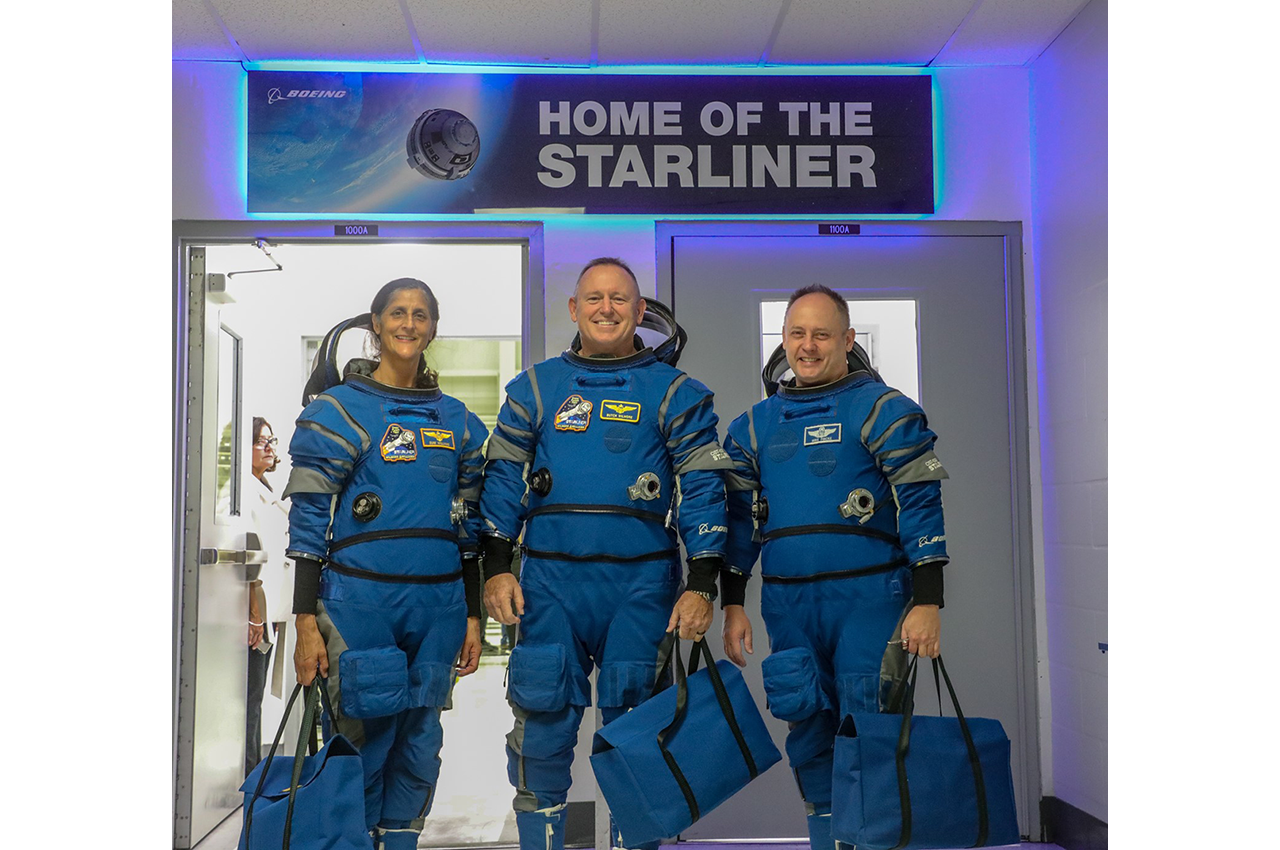 NASA astronauts Suni Williams, Butch Wilmore and Mike Fincke at the Commercial Crew and Cargo Processing Facility. (John Grant photo)
NASA astronauts Suni Williams, Butch Wilmore and Mike Fincke at the Commercial Crew and Cargo Processing Facility. (John Grant photo)
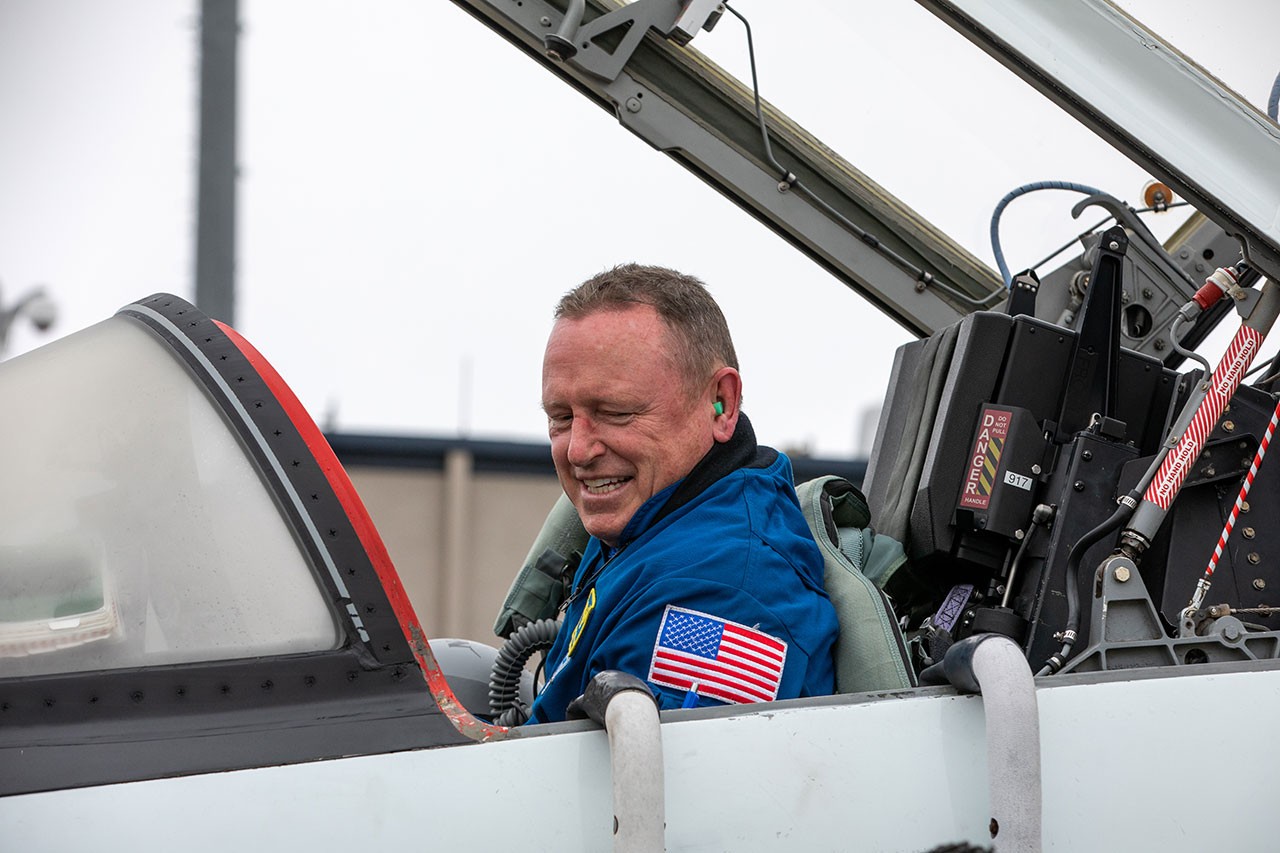 NASA astronaut Butch Wilmore, commander of Boeing’s Crew Flight Test, arrives aboard a T-38 jet aircraft at the Launch and Landing Facility at Kennedy Space Center in Florida on Dec. 17, 2020. (NASA photo)
NASA astronaut Butch Wilmore, commander of Boeing’s Crew Flight Test, arrives aboard a T-38 jet aircraft at the Launch and Landing Facility at Kennedy Space Center in Florida on Dec. 17, 2020. (NASA photo)
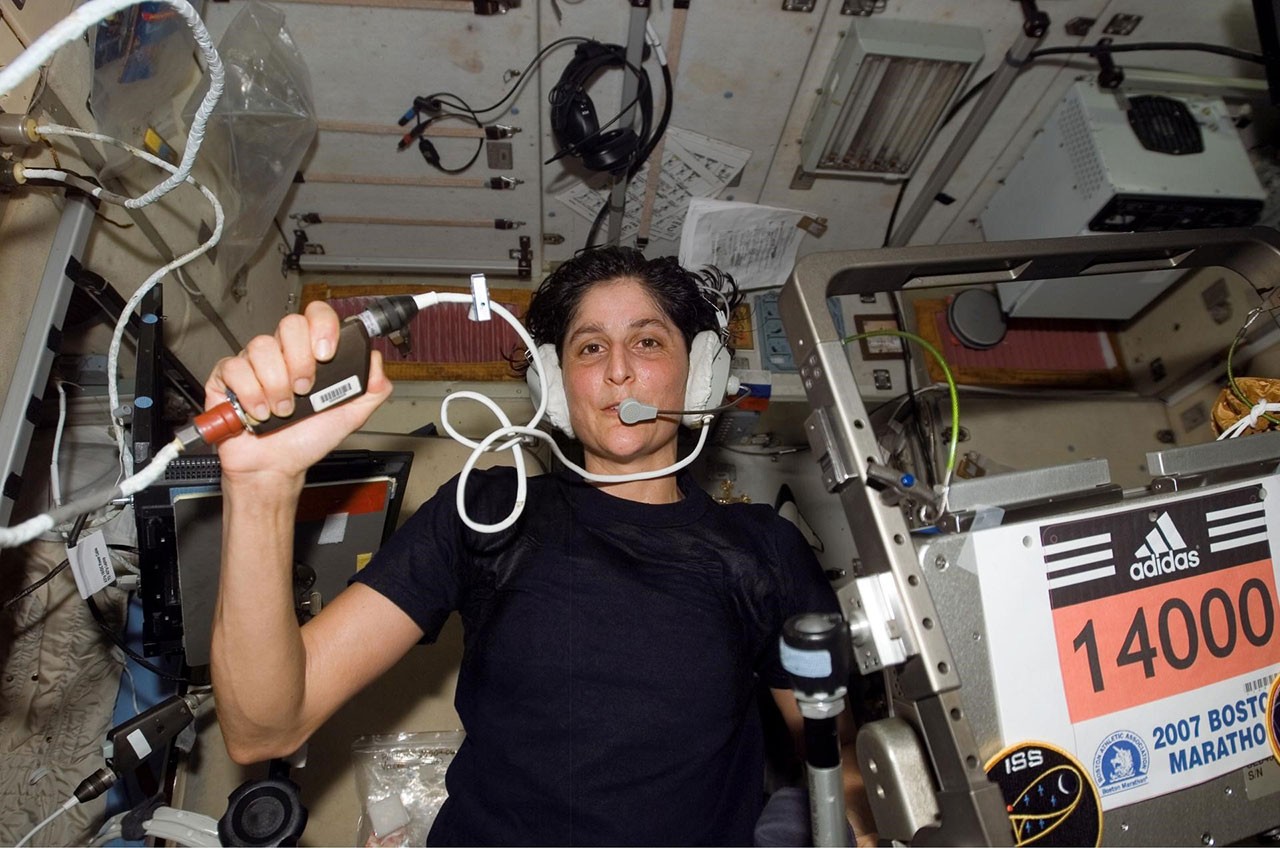 NASA astronaut Suni Williams on the International Space Station in April 2007. She circled the Earth almost three times participating in the Boston Marathon from space. Williams' completion time was four hours, 23 minutes and 10 seconds. (NASA photo)
NASA astronaut Suni Williams on the International Space Station in April 2007. She circled the Earth almost three times participating in the Boston Marathon from space. Williams' completion time was four hours, 23 minutes and 10 seconds. (NASA photo)
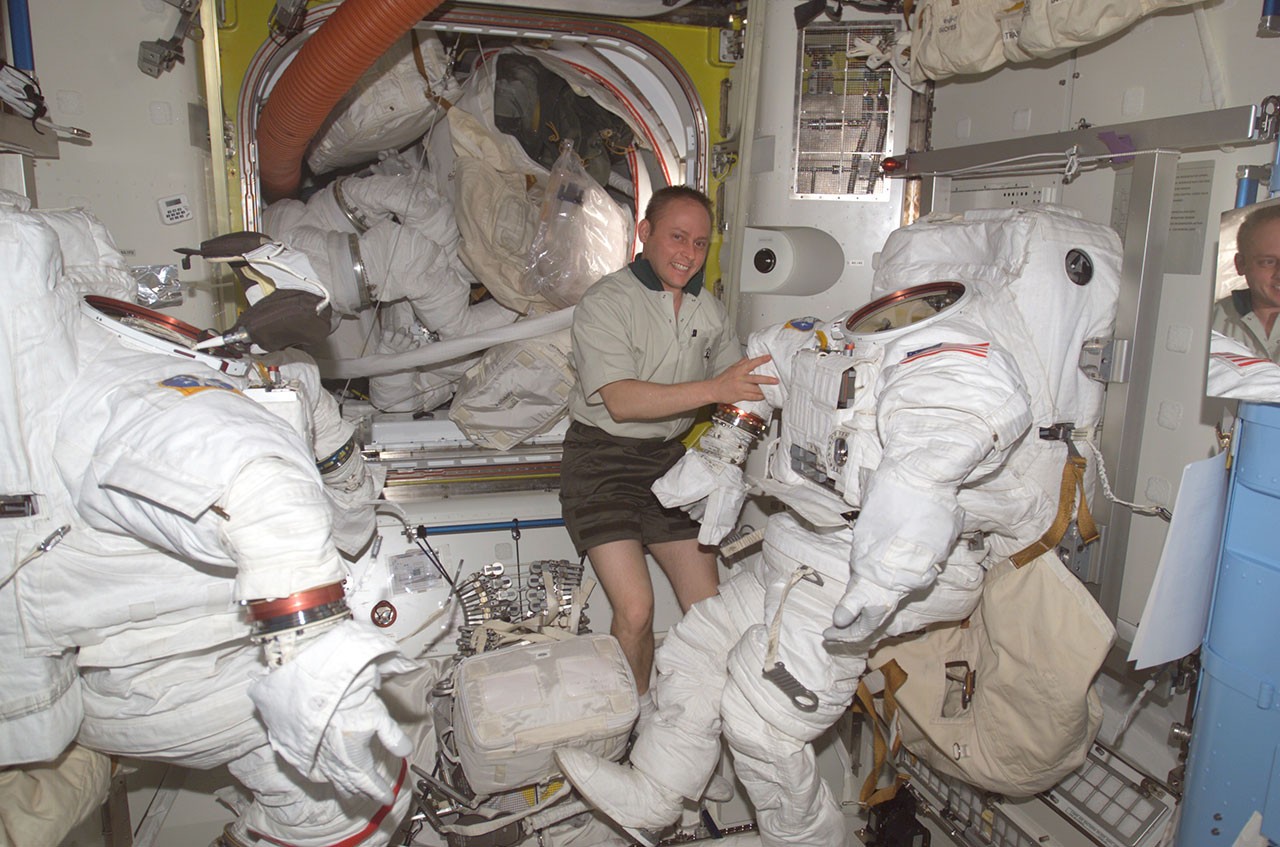 NASA astronaut Mike Fincke in 2004 as Expedition 9 NASA science officer and flight engineer, works with the Extravehicular Mobility Unit spacesuits in the Quest airlock of the International Space Station. (NASA photo)
NASA astronaut Mike Fincke in 2004 as Expedition 9 NASA science officer and flight engineer, works with the Extravehicular Mobility Unit spacesuits in the Quest airlock of the International Space Station. (NASA photo)
A church pastor, a marathon runner who loves the ocean and animals, and a Scout leader are descriptions that provide a glimpse into the lives of the NASA astronauts preparing to fly on the CST-100 Starliner’s first crewed flight.
All three of the astronauts who have been training for the Crew Flight Test (CFT) have enjoyed highly successful careers, but their lives outside the space agency are just as enriching.
Here’s more about CFT commander Butch Wilmore, pilot Suni Williams and backup test pilot Mike Fincke.
NASA astronaut Butch Wilmore
Butch Wilmore flips through his cellphone in the Starliner Astronaut Office at Boeing’s Commercial Crew and Cargo Processing Facility at Kennedy Space Center in Florida, proudly sharing images of furniture he has built from scratch. The etching and woodwork are extensive whether it’s an entertainment center, an elaborate table or a shed for his church where he serves as a pastor.
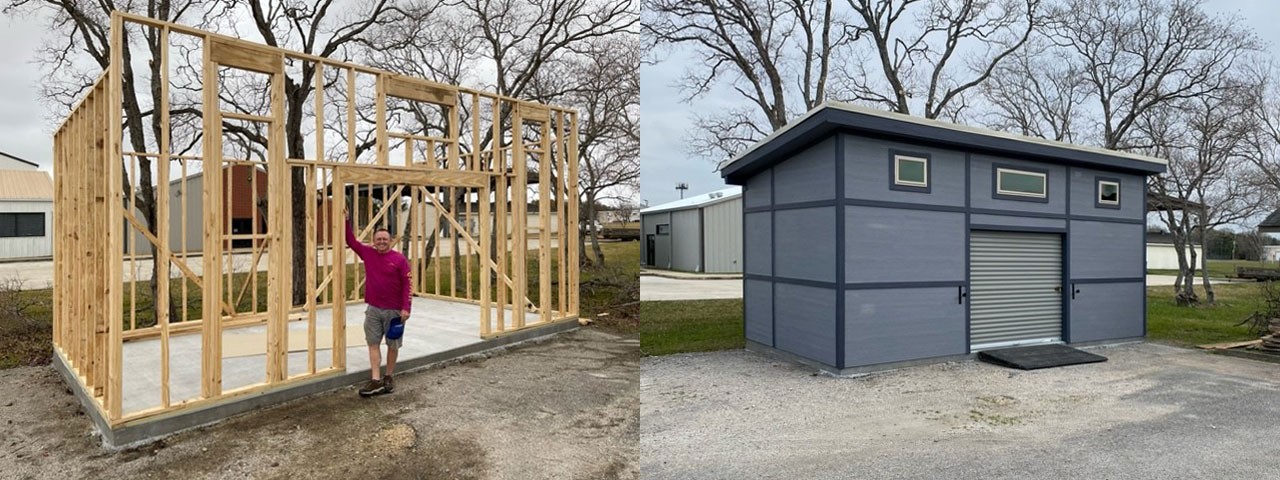 NASA astronaut Butch Wilmore enjoys woodworking and building things in his spare time. He's pictured making a shed for his church in Texas. (Butch Wilmore photo)
NASA astronaut Butch Wilmore enjoys woodworking and building things in his spare time. He's pictured making a shed for his church in Texas. (Butch Wilmore photo)
A fighter pilot, retired U.S. Navy captain and astronaut who has been to space twice, Wilmore is not only a talented craftsman but also one of the pastors at Providence Baptist in Pasadena, Texas. He occasionally preaches, teaches Sunday school, teaches a weekly bible study at a nearby prison and participates in mission trips all over South and Central America assisting dentists and doctors. Wilmore said he does a little bit of everything during mission trips, like meeting physical and spiritual needs.
Wilmore, who grew up in Tennessee, says his faith helps him in all aspects of his life, including the unknowns of flying.
With NASA, he’s accumulated 178 days in space. On his last flight to the International Space Station aboard the Roscosmos Soyuz in September 2014, he first served as flight engineer for Expedition 41 and then commander of Expedition 42 from November 2014 to March 2015.
He’s looking forward to returning to the space station on Starliner and commanding a new spacecraft, which he said “is a rare opportunity” that not many get to experience.
When he’s not involved in space missions, church activities or making furniture, he’s spending time with his wife, Deanna, and two teen daughters. They enjoy going to plays and musicals, including a play one of his daughters participates in.
“I’m enamored by the talent that these young people have,” he said. “It’s also those who are the writers and the choreographers, and all that comes together and the entertainment it brings —clean, good entertainment. It’s uplifting — it lifts the soul, so to speak.”
He also has more than 300 epic movie songs on his phone — what he describes as “great background music that strikes your emotion as you look at a scene,” such as “Remember the Titans” and “Norwegian Pirate.” He plans to have some playing on his way to the space station.
NASA astronaut Suni Williams
With two previous space missions that added up to 322 days in space and seven spacewalks, Suni Williams set world records in 2006 and 2012 for female spacewalks while performing work outside the space station. She ranks sixth on the all-time U.S. endurance list overall, and second all-time for a female astronaut for total cumulative spacewalk time.
The retired U.S. Navy captain, helicopter pilot and basic diving officer not only set records in space but also ran the Boston Marathon on a treadmill while at the space station, as well as taking part in a triathlon.
Williams looks forward to the view of Earth and the ocean when she returns to space on her next flight on board the Starliner.
“Looking out the window and having that view with your own two eyes and seeing our home as a planet in space is truly humbling and pretty spectacular,” she said.
Her love of the water started early: She learned to swim before she learned to walk. She and her brother and sister, who grew up in Massachusetts, all swam competitively in high school and college. She also now takes her two rescue Labrador retrievers, Gunner and Rotor, to the beach to swim in Texas. (In their honor, she’ll be bringing dog tags with their names to the space station).
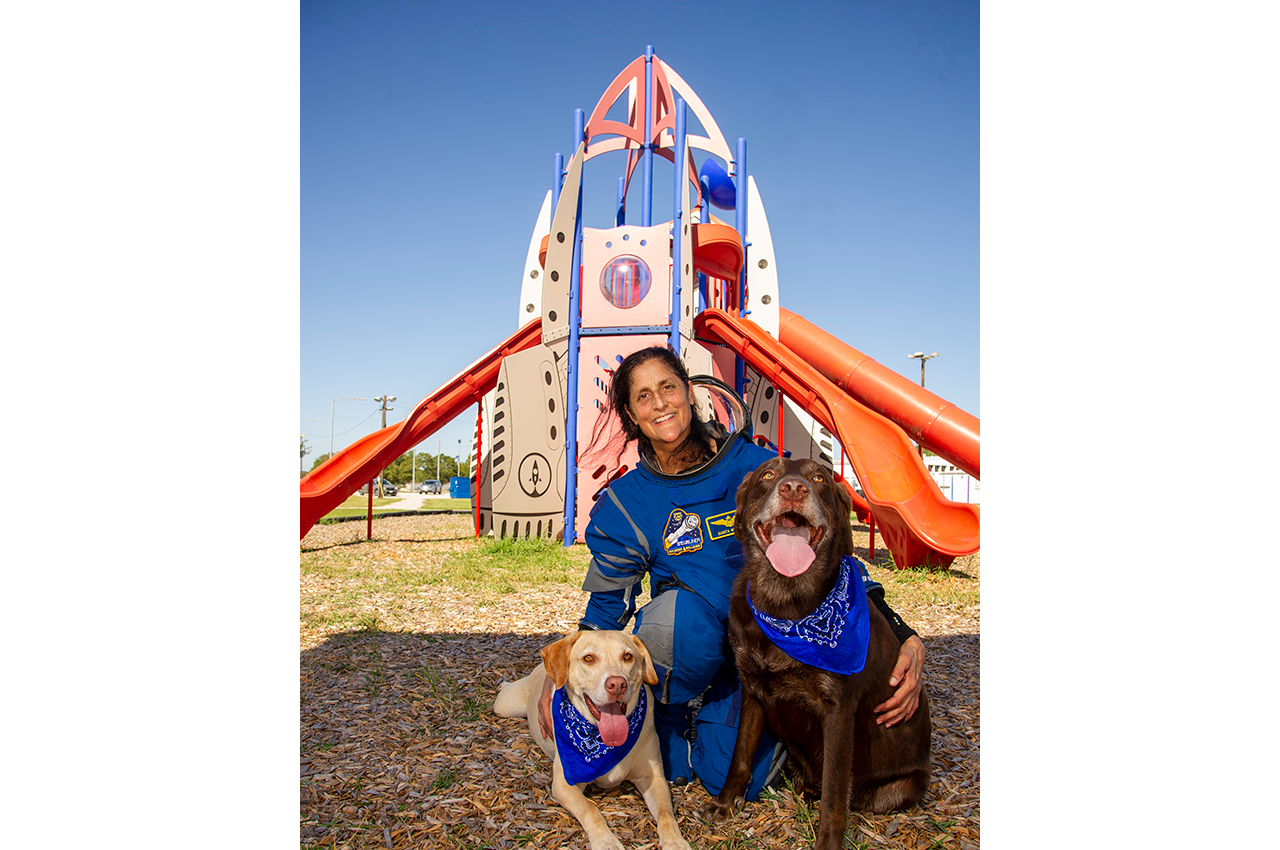 Suni Williams poses with her dogs Rotor, left, and Gunner. (Suni Williams photo)
Suni Williams poses with her dogs Rotor, left, and Gunner. (Suni Williams photo)
“The ocean has always been right there. It’s always been a part of our lives,” Williams said. “You get up in the morning and go for a run and the sun is rising. It’s just amazing. Being in and around the water feels like home.”
She has carried that love to the Starliner program, having named the spacecraft she will be flying in Calypso at the landing of the first Orbital Flight Test in 2019. The name and parts of the Crew Flight Test patch worn on the astronauts’ spacesuits highlight the role of the spacecraft as the gateway to doing research off the planet, as Jacques Cousteau’s research vessel Calypso did on the planet.
By returning to space, Williams, who is of Indian and Slovenian descent, also wanted to give her teenage niece and nephew, who are from India, an opportunity to see a launch up close and experience the possibilities of space exploration through her experience.
“I wanted two kids who never in their wildest imaginations would have thought when they were growing up in India that they’d see a rocket launch. To share that experience will be priceless,” Williams said.
Spending time with family is most important to her. Suni and her husband, Michael, enjoy time together doing projects around the house and working on cars. Both are pilots and have a Super Cub aircraft, which they work on and fly.
They also have two chickens, Lilo and Cheekie, from fellow astronaut Frank Rubio’s farm. “I like learning about animals. I get that from my mom. I’m fascinated by their different personalities. The chickens are super-cool to observe and watch. They are inquisitive and they are demanding.”
NASA astronaut Mike Fincke
NASA astronaut Mike Fincke, retired U.S. Air Force colonel, has been on three previous spaceflights, including the second-to-last shuttle mission in 2011 and final flight of Space Shuttle Endeavour. Having logged more than a year in orbit with nine spacewalks, he too set records, including the American record at that time for the most time in space.
The Pennsylvania native goes by the nickname “Spanky,” based on the character from “The Little Rascals” television show who was outspoken and a youthful leader.
Since Fincke was the youngest in his Air Force Test Pilot School class and many other call signs had been taken, his classmates gave him the nickname.
“I thought I would have outgrown it, but when I moved to NASA it turns out I was also the youngest person in astronaut class, so the name stuck,” Fincke said.
During his military experience, he was a flight-test engineer at Edwards and Eglin Air Force bases flying in F-15 and F-16 aircraft, and later was the United States flight-test liaison to the Japanese/United States XF-2 fighter program. He is conversant in Japanese and Russian, having launched aboard the Soyuz twice. He enjoys learning new languages.
Outside of NASA, Fincke enjoys spending time with his wife, Renita, and three children, and traveling. With a son and daughter in college and another teenage daughter, his free time is spent in a lot of activities ranging from sports to science fairs to scouting.
He’s been a Scout leader with his son and on Scout committees with his daughters. His son and oldest daughter are both Eagle Scouts, and the youngest is on her way.
“My wife and I have been working hard raising our kids and doing all the fun things, the joys of being a parent,” said Fincke, whose second child was born while he was in space.
When he’s not involved in family activities, he reads science fiction or works in a small science lab in his home. He’s learning to make things out of lunar regolith, or lunar soil. The finely ground dust is simulated using the same chemicals and properties found on the Moon. He has grown plants and is still learning how to extract aluminum.
“It’s fun to make something new and to see how things work,” Fincke said. “A lot of our job is meetings, so it’s nice to do things with your hands and make something.”
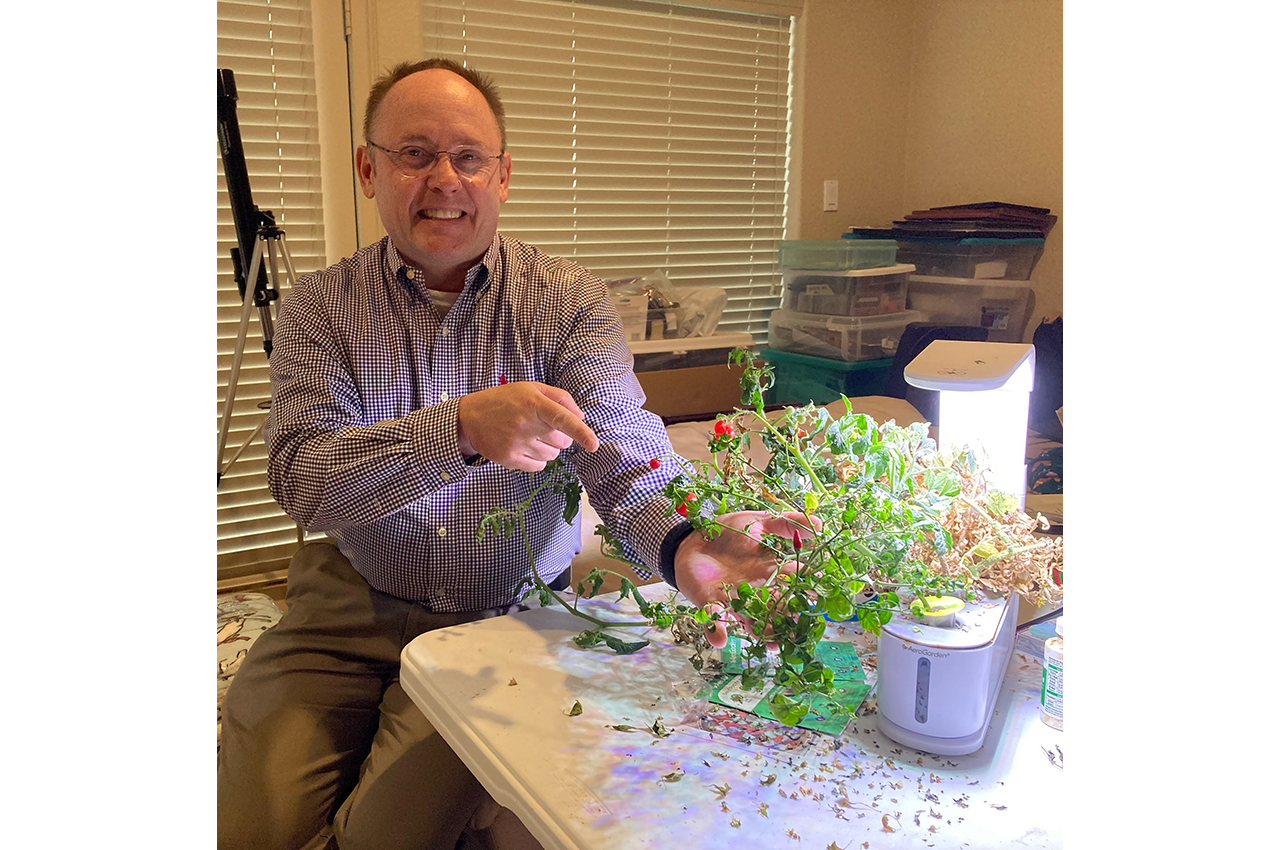 NASA astronaut Mike Fincke pictured with a tomato plant. He enjoys making things out of lunar regolith, or lunar soil, in his home science lab and using hydroponics, which uses water and nutrients. (Mike Fincke photo)
NASA astronaut Mike Fincke pictured with a tomato plant. He enjoys making things out of lunar regolith, or lunar soil, in his home science lab and using hydroponics, which uses water and nutrients. (Mike Fincke photo)
For more Starliner highlights, follow @BoeingSpace on X, formerly known as Twitter, starlinerupdates.com and the CFT mission website.
By Deborah Circelli
